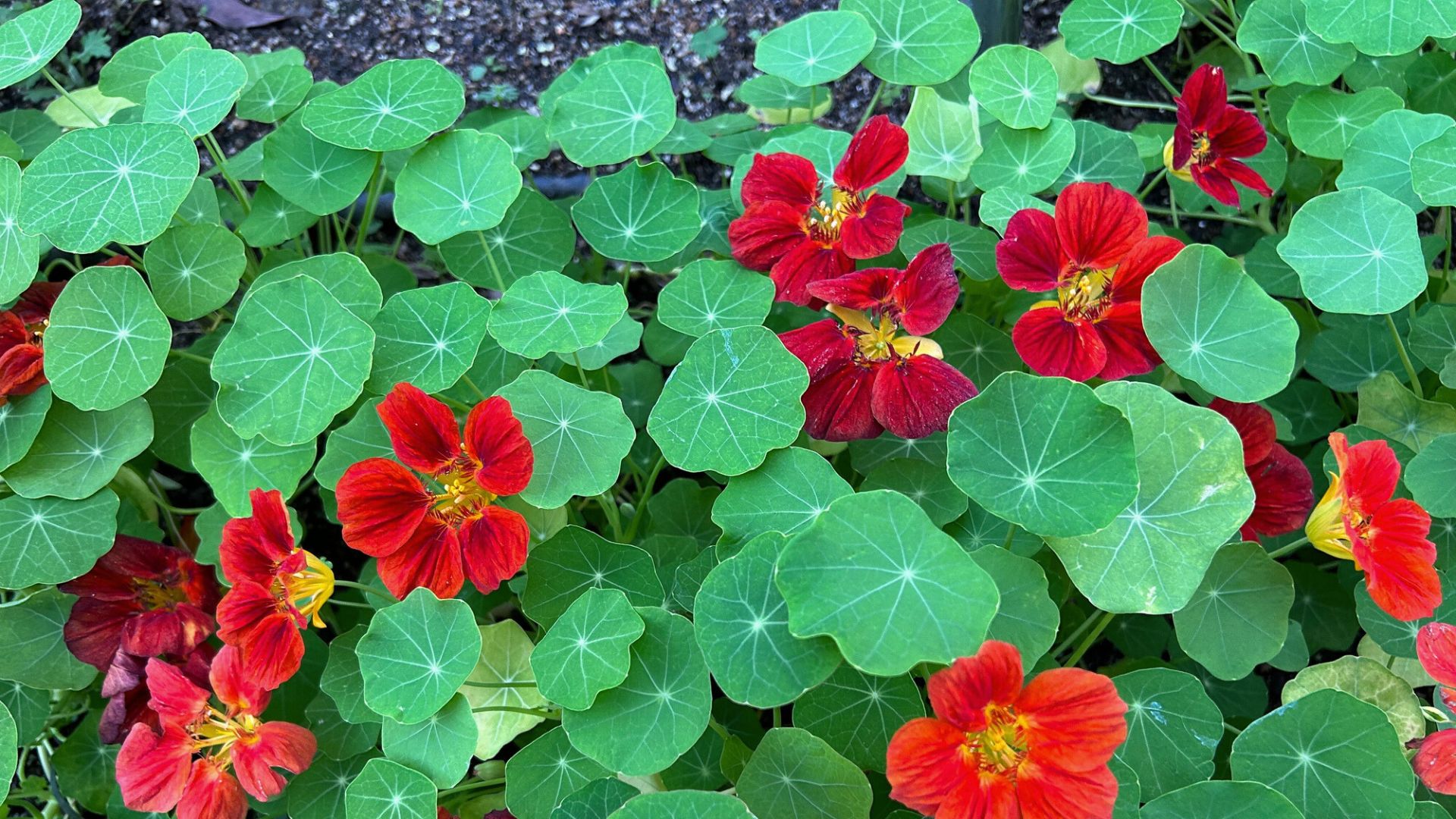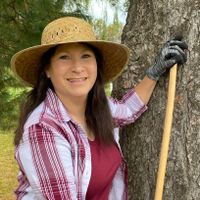Top 10 Questions About Nasturtiums
Nasturtiums are beautiful and the flowers are edible. Read about the top 10 questions we get about nasturtium plants.


Nasturtiums are both beautiful and edible, so it can be disheartening to have these wonderful flowers not perform as expected.
It's the goal of Gardening Know How to help avoid nasturtium issues, or at the very least amend them, by providing the best information possible so your flower garden will flourish - and that includes answering the nasturtium questions that plague us all. Here are the top questions about growing nasturtium flowers.
1) How do you care for nasturtiums?
Busy gardeners appreciate nasturtiums because they are incredibly easy to grow. One reason is these edible flowers thrive in poor soil, so no need for soil testing or amending. Simply choose a location which receives full to partial sun and has good drainage.
Nasturtiums are also well-suited to container growing. Keep nasturtiums weeded and water when rain is scarce and the top of the soil has dried.
For the healthiest plants, avoid overwatering. Once the flowers are spent, deadhead the plants to encourage more blossoms. In areas that receive frost, nasturtiums are grown as annuals.
2) Why are my nasturtium leaves turning yellow?
Sign up for the Gardening Know How newsletter today and receive a free copy of our e-book "How to Grow Delicious Tomatoes".
Gardeners are right to be concerned when they see yellowing leaves on their plants. This indicates something is wrong. When this happens, I like to perform a thorough inspection of the plant.
I start by reviewing the growing requirements of the plant. Nasturtiums prefer full sun and not-so-fertile soil with good drainage. Improper amounts of light, too much or too little water, excess fertilizer, and poor drainage can cause nasturtium leaves to yellow.
Next, I look for additional signs of disease or the presence of pests. Nasturtium leaves also turn yellow if they are accidentally hit with overspray from an herbicide.
In cooler climates where nasturtium is grown as an annual, expect flowers from early summer until the plants are killed by fall frost.
Shorter varieties of nasturtium bloom sooner than taller types, as the latter must achieve more vertical growth before producing flowers.
In frost-free climates, nasturtium grows as a perennial and can bloom all year. In either climate, nasturtiums may experience a period of dormancy during extremely hot, humid summer weather.
A common mistake is applying fertilizer in hopes of sparking the plants' interest in blooming. This generally doesn't work with nasturtiums. A rich growing medium encourages foliage growth which can overwhelm flower production.
4) What to do for leggy nasturtium plants?
Plants of all types tend to get leggy when their sunlight requirements are not adequately met. Nasturtiums can survive in partial shade, but their preference is full sun. It's advisable to plant nasturtium where it can receive a minimum of 6 to 8 hours of sunlight per day.
Legginess is also more noticeable in trailing or climbing varieties of nasturtium. Try pruning long vines back 6 to 8 inches (15-20 cm) to encourage budding. And even though nasturtium grows best in poor soil, a total lack of nutrients can result in leggy growth. This is most noticeable in container-grown nasturtiums. A light dose of balanced fertilizer may help.
5) Are nasturtiums good plants for pollinators?
Definitely! The brightly colored red, yellow and orange hues of nasturtium flowers fall within the visible spectrum of many pollinators, including bees and hummingbirds. Additionally, nasturtium nectar is particularly sweet. It's reported to contain more sucrose than most other species of flowers. Nasturtium nectar provides a great energy source for hummingbirds, who burn many calories flapping their wings 50 times or more per second. The nectar is contained within the long spur of the nasturtium flower, making it less accessible to pollinators lacking long proboscises or tongues. That's great news for hummingbirds!
6) When to plant nasturtium seeds?
In areas that receive frost, nasturtiums are typically grown as annuals. Since nasturtiums are sensitive to cold, seeds can be started indoors 4 to 6 weeks prior to the last frost date.
Nasturtiums don't transplant as well as other types of flowers, so using peat pots is highly recommended to reduce transplant shock. Nasturtiums can also be directly seeded in the ground once frost-free weather has arrived. The large seeds can be nicked or soaked overnight to reduce germination time. Nasturtium seedlings can be transplanted or thinned to create an 8- to 10-inch (20 to 25 cm) spacing between plants.
7) How do you harvest edible nasturtium flowers?
It's easy to understand the interest in harvesting nasturtium. The fresh leaves and flowers have a peppery taste which can vary in intensity depending upon the time of day they're harvested. The beautiful flowers can also be used to decorate cakes and desserts.
To harvest these edible delights, simply pick the flower buds or blossoms and the young, tender leaves as needed. It's best to leave a long stem when harvesting nasturtiums for cake decorating but, otherwise, the blossoms can be removed close to the flower. If you prefer milder flavor, pick nasturtium early in the day.
8) Will deadheading encourage more nasturtium blooms?
Yes, deadheading does encourage nasturtium to bloom for a longer period. Deadheading is a gardening term which refers to the removal of spent or dead flowers. This technique not only improves the appearance of the plant, but also encourages the plant to redirect energy from seed production to the growth of new flowers.
As an added bonus, removing the flowers before they produce seeds helps control the unwanted spread of plants, which freely self-seed. To deadhead nasturtium, pinch or cut off the stem directly below the spent flower. Be sure to leave the pair of leaves directly under the flower.
9) Why haven't my nasturtiums produced any seeds?
Nasturtium seeds can be difficult to spot. There's a good chance they were overlooked. To find the seeds, move the leaves aside and look closely. More often than not, the seeds will still be green and tend to blend in with the foliage. With nasturtium seeds, size is a better indicator of maturity than color. The bigger the seed, the better the germination rate.
So go ahead and pick those green seeds or rescue the brown ones from the ground. Bring the seeds inside and allow them to dry completely before storing them for the winter.
10) How to control the spread of nasturtiums?
As mentioned above, deadheading spent flowers before they produce seeds is an excellent way to prevent the spread of invasive plants. If nasturtiums have already advanced to unwanted areas of the garden, hand weeding may help control the overpopulation of these flowers. Boiling water or white vinegar are safe alternatives to chemical herbicides and can be used to reestablish control. (Care should be taken not to hit desirable plants.) Unfortunately, in frost-free climates, nasturtium can grow and distribute seeds year round.
We all have questions now and then, whether long-time gardeners or those just starting out. So if you have a gardening question, get a gardening answer. We're always here to help.

Laura Miller has been gardening all her life. Holding a degree in Biology, Nutrition, and Agriculture, Laura's area of expertise is vegetables, herbs, and all things edible. She lives in Ohio.